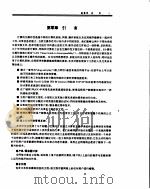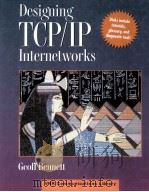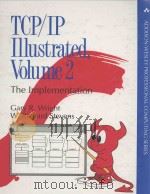《TCP/IP 路由技术·卷1》
| 作者 | Jeff Doyle 编者 |
|---|---|
| 出版 | 北京:清华大学出版社 |
| 参考页数 | 1026 |
| 出版时间 | 1999(求助前请核对) 目录预览 |
| ISBN号 | 7302029490 — 求助条款 |
| PDF编号 | 86642068(仅供预览,未存储实际文件) |
| 求助格式 | 扫描PDF(若分多册发行,每次仅能受理1册) |
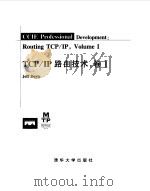
Foreword1
Part ⅠRouting Basics3
Chapter 1 Basic Concepts:Internetworks,Routers,and Addresses4
Bicycles with Motors6
Data Link Addresses7
Repeaters and Bridges11
Routers18
Network Addresses22
Looking Ahead25
Recommended Reading25
Review Questions26
Chapter 2 TCP/IP Review28
The TCP/IP Protocol Layers29
The IP Packet Header32
IP Addresses40
The First Octet Rule45
Address Masks48
Subnets and Subnet Masks51
Designing Subnets55
Breaking the Octet Boundary57
Troubleshooting a Subnet Mask62
ARP63
Proxy ARP69
Reverse ARP72
Gratuitous ARP72
ICMP73
The Host-to-Host Layer78
TCP78
UDP83
Looking Ahead84
Summary Table:Chapter 2 Command Review85
Recommended Reading85
Review Questions86
Configuration Exercises87
Troubleshooting Exercises88
Chapter 3 Statie Routing90
The Route Table92
Configuring Static Routes97
Case Study:Simple Static Routes97
Case Study:Summary Routes101
Case Study:Alternative Routes103
Case Study:Floating Static Routes105
Case Study:Load Sharing109
Per Destination Load Sharing and Fast Switching110
Per Packet Load Sharing and Process Switching111
Case Study:Recursive Table Lookups113
Troubleshooting Static Routes114
Case Study:Tracing a Failed Route115
Case Study:A Protocol Conflict121
Looking Ahead126
Summary Table:Chapter3Command Review126
Review Questions127
Configuration Exercises128
Troubleshooting Exercises130
Chapter 4 Dynamic Routing Protocols136
Routing Protocol Basics138
Path Determination138
Metrics141
Band width142
Hop Count142
Load143
Delay143
Reliability143
Cost144
Convergence144
Load Balancing146
Distance Vector Routing Protocols146
Common Characteristics148
Periodic Updates148
Neighbors148
Broadcast Updates148
Routing by Rumor149
Full Routing Table Updates149
Route Invalidation Timers151
Split Horizon152
Counting to Infinity156
Triggered Updates157
Holddown Timers158
Asynchronous Updates158
Link State Routing Protocols160
Neighbors161
Link State Flooding162
The Link State Database173
The SPF Algorithm176
Areas181
Interior and Exterior Gateway Protocols183
Static or Dynamic Routing?185
Looking Ahead186
Recommended Reading186
Reivew Questions188
Part ⅡInterior Routing Protocols189
Chapter 5 Routing Information Protocol(RIP)190
Operation of RIP192
RIP Timers and Stability Features193
RIP Message Format196
Request Message Types199
Classful Routing200
Classful Routing:Directly Connected Subnets201
Classful Routing:Summarization at Boundary Routers203
Classful Routing:Summary205
Configuring RIP205
Case Study:A Basic RIP Configuration205
Case Study:Passive Interfaces207
Case Study:Configuring Unicast Updates210
Case Study:Discontiguous Subnets212
Case Study:Manipulating RIP Metrics216
Troubleshooting RIP219
Recommended Reading220
Looking Ahead220
Summary Table:Chapter 5Command Review220
Review Questions221
Configuration Exercises221
Troubleshooting Exercises223
Chapter 6 Interior Gateway Routing Protocol(IGRP)230
Operation of IGRP232
IGRP Timers and Stability Features235
IGRP Metrics237
IGRP Packet Format245
Configuring IGRP249
Case Study:ABasic IGRP Configuration250
Case Study:Unequal-Cost Load Balancing251
Case Study:Setting Maximum Paths256
Case Study:Multiple IGRP Processes257
Troubleshooting IGRP260
Case Study:Unequal-Cost Load Balancing, Again261
Case Study:A Segmented Network263
Looking Ahead266
Summary Table:Chapter 6 Command Review267
Recommended Reading268
Review Questions268
Configuration Exercises269
Troubleshooting Exercises273
Chapter 7 Routing Information Protocol Version 2280
Operation of RIPv2282
RIPv2 Message Format282
Compatibility with RIPv1286
Classless Route Lookups287
Classless Routing Protocols287
Variable-Length Subnet Masking288
Authentication292
Configuring RIPv2296
Case Study:A Basic RIPv2 Configuration297
Case Study:Compatibility with RIPv1297
Case Study:Using VLSM300
Case Study:Discontiguous Subnets and Classless Routing303
Case Study:Authentication306
Troubleshooting RIPv2309
Case Study:Misconfigured VLSM310
Looking Ahead317
Summary Table:Chapter7 Commmand Review317
Recommended Reading318
Review Questions318
Configuration Exercises319
Troubleshooting Exercises321
Chapter 8 Enhanced Interior Gateway Routing Protocol(EIGRP)326
Operation of EIGRP329
Protocol-Dependdent Modules330
Reliable Transport Protocol331
Neighbor Discovery/Recovery333
The Diffusing Update Algorithm335
DUAL:Preliminary Concepts335
The DUAL Finite State Machine345
Diffusing Computation:Example1349
Diffusing Computation:Example2354
EIGRP Packet Formats363
The EIGRP Packet Header363
General TLV Fields365
IP-Specific TLV Fileds366
Address Aggregation371
Configuring EIGRP376
Case Study:A Basic EIGRP Configuration377
Case Study:Redistribution with IGRP379
Case Study:Disabling Automatic Summarization383
Case Study:Address Aggregation384
Authentication385
Troubleshooting EIGRP387
Case Study:A Missing Neighbor388
Stuck-in-Active Neighbors394
Summary Table:Chapter 8 Command review399
Looking Ahead399
Review Questions401
Configuration Exercises402
Troubleshooting Exercises404
Chapter 9 Open Shortest Path First408
Operation of OSPF410
Neighbors and Adjacencies412
The Hello Protocol413
Nework Types415
Designated Routers and Backup Designated Routers418
OSPF Interfaces423
OSPF Neighbors430
Flooding450
Areas457
Pouter Types460
Partitioned Areas462
Virtual Links463
The Link State Database466
LSA Types470
Stub Areas479
The Route Table485
Destination Types486
Path Types487
Route Table Lookups490
OSPF over Demand Circuits491
Authentication491
OSPF Packer Formats493
The Packet Header495
The Hello Packet498
The Database Description Packet499
The Link State Request Packet501
The Link State Update Packet502
The Link State Acknowledgment Packet503
OSPF LSA Formats504
The LSA Header504
The Router LSA506
The Network LSA509
The Network and ASBR Summary LSAs510
The Autonomous System External LSA512
The NSSA External LSA513
The Options Field515
Configuring OSPF516
Case Study:A Basic OSPF Configuration516
Case Study:Setting Router IDs with Loopback Interfaces520
Case Study:Domain Name Service Lookups525
Case Study:OSPF and Secondary Addresses526
Case Study:Stub Areas531
Case Study:Totally Stubby Areas536
Case Study:Not-So-Stubby Areas537
Case Study:Address Summarization545
Case Study:Authentication550
Case Study:Virtual Links553
Case Study:OSPF on NBMA Networks555
Case Study:OSPF over Demand Circuits565
Troubleshooting OSPF567
Case Study:An Isolated Area572
Case Study:Misconfigured Summarization577
Looking Ahead581
Summary Table:Chapter 9 Command Review581
Recommended Reading583
Review Questions584
Configuration Exercises585
Troubleshooting Exercises588
Chatper 10 Integrated IS-IS592
Operation of Integrated IS-IS595
IS-IS Areas597
Network Entity Titles600
IS-IS Functional Qrganization603
Subnetwork Dependent Functions604
Subnetwork Independent Functions610
IS-IS PDU Formats621
CLV Fields624
The IS-IS Hello PDU Format627
The IS-IS Link State PDU Format636
The IS-IS Sequence Numbers PDU Format646
Configuring Integrated IS-IS647
Case Study:A Basic Integrated IS-IS Configuration650
Case Study:Changing the Router Types655
Case Study:An Area Migration660
CaSe Study: Route Summarization664
Case Study:Authentication668
Troubleshooting Integrated IS-IS671
Troubleshooting IS-IS Adjacencies672
Troubleshooting the IS-IS Link State Database673
Case Study:Integrated IS-IS on NBMA Networks678
Looking Ahead684
Summary Table:Chapter 10 Command Review685
Review Questions686
Configuration Exercises688
Troubleshooting Exercises690
Part ⅢRoute Control and Interoperability693
Chapter11 Route Redistribution694
Principles of Redistribution698
Metrics698
Administrative Distances699
Redistributing from Classless to Classful Protocols707
Configuring Redistribution712
Case Study:Redistributing IGRP and RIP715
Case Study:Redistributing EIGRP and OSPF717
Case Study:Redistribution and Route Summarization722
Case Study:Redistributing IS-IS and RIP730
Case Study:Redistributing Static Routes733
Looking Ahead737
Summary Table:Chapter 11 Command Review738
Review Questions738
Configuration Exercises739
Troubleshooting Exercises740
Chapter 12 Default Routes and On-Demand Routing742
Fundamentals of Default Routes744
Fundamentals of On-Demand Routing746
Configuring Default Routes and ODR750
Case Study:Static Default Routes751
Case Study:The Default-Network Command755
Case Study:The Default-Information Originate Command758
Case Study:Configuring On-Demand Routing763
Looking Ahead764
Summary Table:Chapter 12 Command Review765
Review Questions765
Chapter 13 Route Filtering768
Configuring Route Filters771
Case Study:Filtering Specific Routes772
Case Study:Route Filtering and Redistribution776
Case Study:A Protocol Migration780
Case Study:Multiple Redistribution Points787
Case Study:Using Distances to Set Router Preferences794
Looking Ahead797
Summary Table:Chapter 13 Commad Review797
Configuration Exercises798
Troubleshooting Exercises801
Chapter 14 Route Maps804
Basic Uses of Route Maps805
Configuring Route Maps809
Case Study:Policy Routing812
Case Study:Policy Routing and Quality of Service Routing820
Case Study:Route Maps and Redistribution824
Case Study:Route Tagging829
Looking Ahead836
Summary Table:Chapter 14 Command Review837
Review Questions839
Configuration Exercises839
Troubleshooting Exercises841
Part ⅣAppendixes843
Appendix A Tutorial:Working with Binary and Hex844
Working with Binaty Numbers847
Working with Hexadecimal Numbers849
Appendix B Tutorial:Access Lists852
Access List Basics854
Implicit Deny Any856
Sequentiality856
Access List Types857
Editing Access Lists861
Standard IP Access Lists862
Extended IP Access Lists865
TCP Access Lists869
UDP Access Lists870
ICMP Access Lists871
Calling the Access List871
Keyword Alternatives875
Named Access Lists876
Filter Placement Considerations877
Access List Monitoring and Accounting880
Appendix C CCIE Preparation Tips882
Laying the Foundations885
Hands-On Expertience886
Intensifying the Study887
The Final Six Months888
Exam Day889
Appendix D Answers to Review Questions892
Chapter1893
Chapter2896
Chapter3900
Chapter4902
Chapter5905
Chapter6906
Chapter7907
Chapter8908
Chapter9911
Chapter10914
Chapter11916
Chapter12917
Chapter14918
Appendix E Solutions to Configuration Problems920
Chapter2921
Chapter3931
Chapter5935
Chapter6938
Chapter7939
Chapter8942
Chapter9943
Chapter10948
Chapter11958
Chapter13959
Chapter14962
Appendix F Solutions to Troubleshooting Exercises966
Chapter2967
Chapter3968
Chapter5968
Chapter6970
Chapter7970
Chapter8970
Chapter9971
Chapter10971
Chapter11972
Chapter13972
Chapter14973
Index974
1999《TCP/IP 路由技术·卷1》由于是年代较久的资料都绝版了,几乎不可能购买到实物。如果大家为了学习确实需要,可向博主求助其电子版PDF文件(由Jeff Doyle 1999 北京:清华大学出版社 出版的版本) 。对合法合规的求助,我会当即受理并将下载地址发送给你。
高度相关资料
-

- TCP/IP与网络互联技术
- 1998 北京:电子工业出版社
-

- TCP/IP路由技术卷一
- 1999
-

- TCP/IP网络原理与技术
- 1993
-
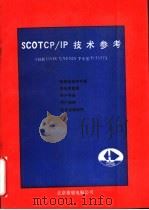
- SCOTOP/IP技术参考 包括UNIX与XENIX下安装TCP/IP
- 北京希望电脑公司
-
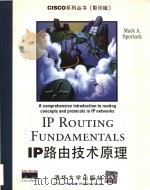
- IP Routing fundamentals = IP 路由器技术原理 (影印版)
- 1999 清华大学出版社
-
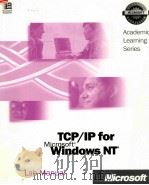
- TCP/IP FOR MICROSOFT WINDOWS NT
- 1998 MICROSOFT PRESS
-
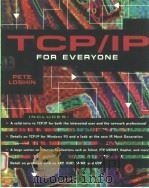
- TCP/IP FOR EVERYONE
- 1995 AP PROFESSIONAL
-
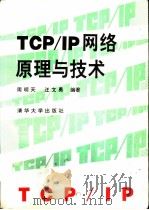
- TCP/IP网络原理与技术
- 1993 北京:清华大学出版社
-
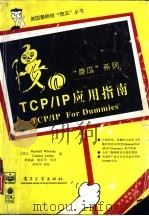
- TCP/IP应用指南
- 1996 北京:电子工业出版社
-
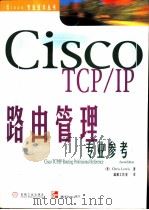
- Cisco TCP/IP路由管理专业参考
- 1999 北京:机械工业出版社
-
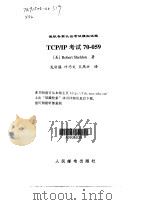
- TCP/IP考试70-059
- 1999 北京:人民邮电出版社
提示:百度云已更名为百度网盘(百度盘),天翼云盘、微盘下载地址……暂未提供。➥ PDF文字可复制化或转WORD
